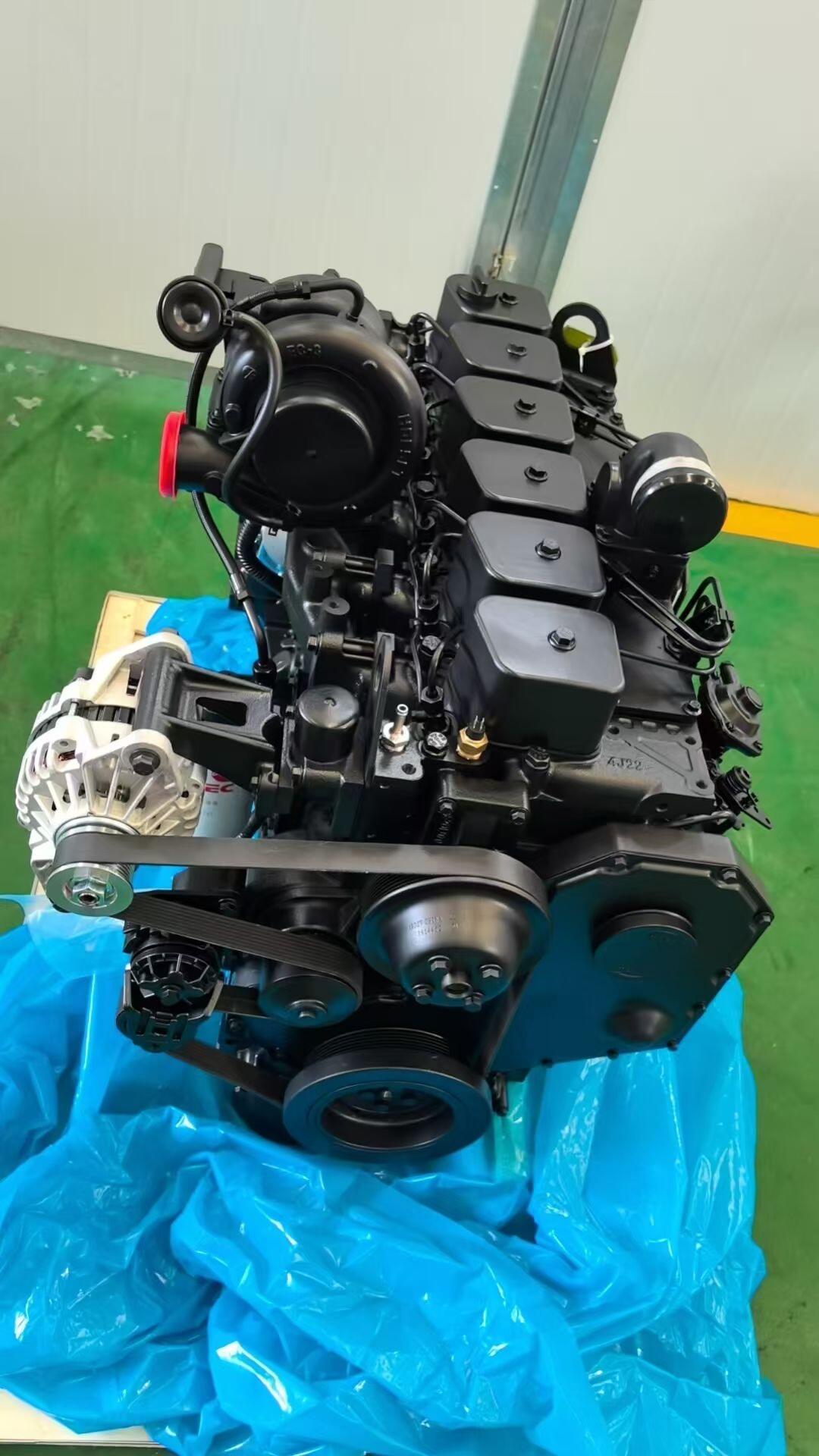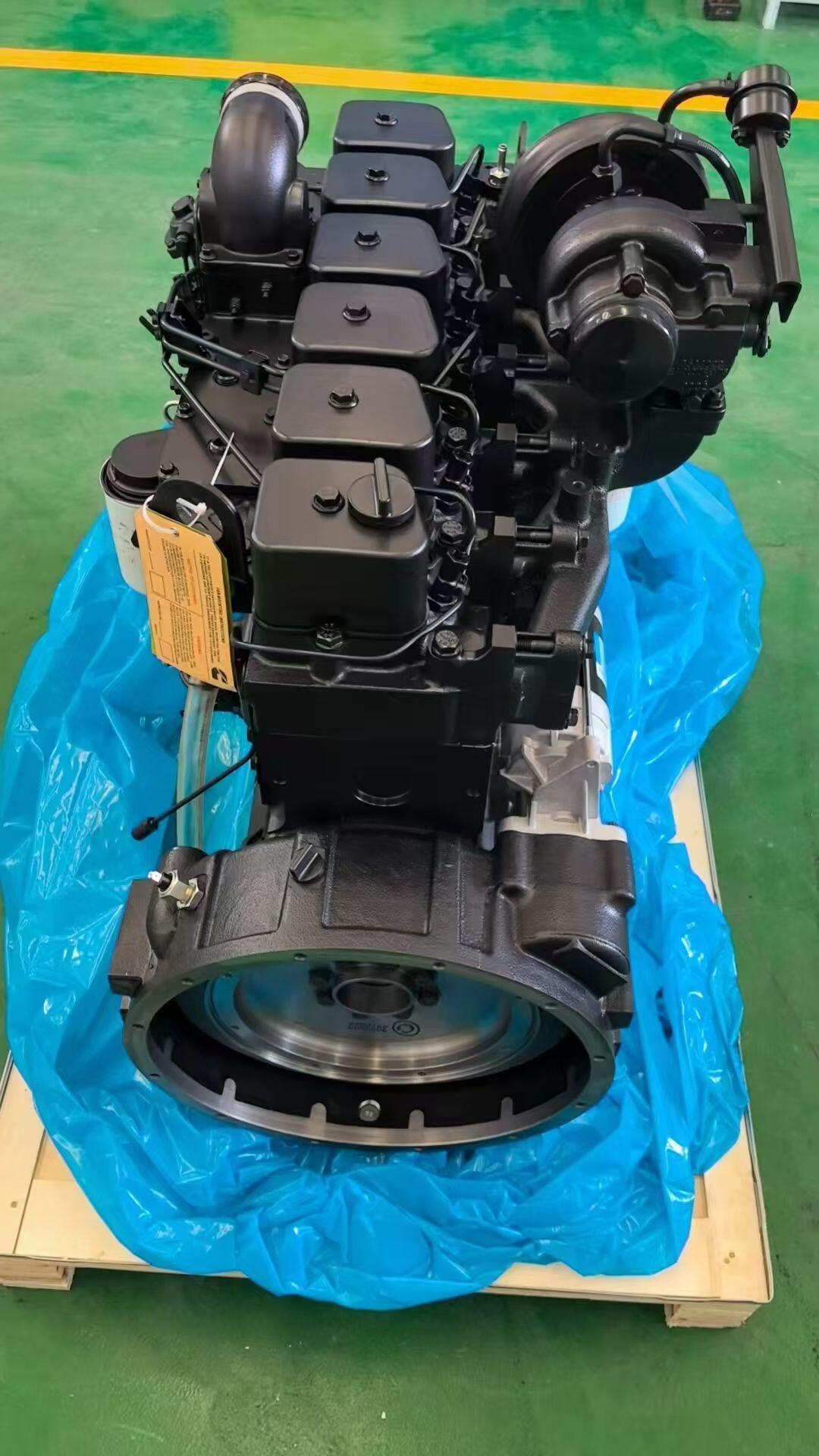Vanlige problemer og løsninger for Cummins-motorer
Innføring i Cummins-motorer
En Cummins-motor har lenge vært synonymt med holdbarhet, ytelse og effektivitet i industrier som transport, bygg, maritim, landbruk og kraftforsyning. Disse motorene er bygget for å fungere under krevende forhold og gi mange års tjeneste når de vedlikeholdes ordentlig. Likevel, som med alle mekaniske systemer, Cummins-motorer kan oppleve problemer over tid. Å forstå de vanligste problemene og deres løsninger gjør det mulig for operatører, flåtestyrere og utstyrseiere å minimere nedetid, forlenge motorens levetid og opprettholde effektivitet.
Denne artikkelen utforsker noen av de mest vanlige utfordringene som oppstår med Cummins-motorer , deres årsaker og beste praksis for å løse dem effektivt.
Problemer med brennstoffsystemet
Dårlig brennstofføkonomi
En av de mest vanlige klagen er redusert drivstoffeffektivitet. En Cummins-motor som bruker mer brennstoff enn forventet, kan oppleve problemer med brennstoffinjektorer, filtre eller brennstoffpumpe. Tilstoppete injektorer kan hindre optimal brennstoffatomisering, mens skitne filtre begrenser strømmen.
Løsningen er å sikre jevnlig vedlikehold, inkludert å bytte brennstofffilter ved anbefalte intervaller og bruke høykvalitets diesel. Injektorene bør inspiseres og rengjøres eller erstattes om nødvendig. I noen tilfeller kan også gjenkalibrering av elektronisk kontrollmodul hjelpe med å gjenopprette effektiviteten.
Vanskelig start eller feil ved starting
Problemer ved starting kan skyldes luft i brennstoffsystemet, svake brennstoffpumper eller defekte injektorer. I kaldere klima kan gelering av dieseldriftstoff også bidra til dette problemet.
Løsningene inkluderer å lufte drivstoffsystemet for å fjerne innestengt luft, sørge for at glødeplugger eller innsugningsvarmere fungerer som de skal, og bruke vinterdrivstoff eller tilsetningsstoffer for å forhindre gelering. En grundig inspeksjon av drivstoffpumpen og injektorene er også viktig.
Kjølesystemutfordringer
Overoppvarming
Overopphedning i en Cummins-motor er et alvorlig problem som kan skyldes lave kjølevætsnivåer, tilstoppede radiatore, defekte termostater eller vannpumpefeil. Overopphedning påvirker ikke bare ytelsen, men kan også føre til langsiktig skade som forvrengte sylinderhoder.
Løsninger inkluderer å holde riktig nivå på kjølevæske, å skylle radiator regelmessig, utskiftning av defekte termostater og å sikre at vannpumpen fungerer korrekt. Det er også viktig å sjekke for lekkasje i slanger og tetninger.

Kjølevæskeskontaminering
Kontaminering av kjølevæske, ofte indikert ved at olje blander seg med kjølevæske, er et annet problem. Dette peker vanligvis på en defekt sylinderhodetetning, revnet sylinderhode eller defekt oljekjøler.
Løsningen innebærer å identifisere rotårsaken til forurensningen og erstatte den defekte komponenten. Regelmessig testing av kjølevæske hjelper med å oppdage problemer tidlig.
Problemer med smøresystemet
Økt oljeforbruk
Høy oljeforbruk kan skyldes slitte stempelringer, ventilstyringer eller turbocharger-seal. Det kan også tyde på bruk av feil oljekvaliteter.
Løsninger innebærer bruk av anbefalt oljekvalitet for Cummins-motoren, overvåking av oljenivået med jevne mellomrom og gjennomføring av motorinspeksjoner for slite på komponenter. Hvis stempelringene eller ventilsene er slitte, kan det være nødvendig å rebygge eller reparere motoren.
Oljelekking
Oljelkk kan forekomme rundt pakninger, tetter og oljepan. Selv om mindre lekkasje ikke nødvendigvis fører til umiddelbar ytelsesreduksjon, kan de skape sikkerhetsfarer og føre til gradvis oljemangel.
Løsninger inkluderer inspeksjon og utskiftning av defekte pakninger eller tetter, å tilspenne bolter til riktig dreiemoment og å sikre tilstrekkelig karterventilasjon.
Problemer med turbocharger og luftinntak
Turbocharger-feil
Turbolader spiller en viktig rolle i å forbedre motoreffekten. En Cummins Engine-turbo kan svikte på grunn av oljemangel, forurensning eller overdreven varme. Symptomer inkluderer effekttap, uvanlige lyder eller overdreven avgassrøyk.
Løsningen er regelmessige olje- og filterbytter, og sørge for riktig smøring samt å unngå lenge tomgang som kan belaste turboladeren. Hvis turboladeren svikter, er utskifting med en original Cummins-komponent det mest pålitelige alternativet.
Begrenset luftstrøm
Tette luftfilter eller blokkerte inntakssamlere reduserer luftstrømmen, noe som begrenser forbrenningseffektiviteten og motorkraften.
Løsninger inkluderer regelmessig inspeksjon og utskifting av luftfilter samt å sjekke for tilstopping i inntakssystemet.
Utslipp og eksosanliggende problemer
Overdreven avgassrøyk
En Cummins-motor kan slippe ut svart, hvit eller blå røyk avhengig av problemet. Svartrøyk tyder på ufullstendig forbrenning på grunn av overskudd av drivstoff eller for lite luft. Hvitrøyk indikerer kjølevæske eller drivstoff som kommer inn i forbrenningskammeret, mens blårøyk tyder på at olje brenner.
Løsningene varierer, men inkluderer rengjøring eller utskifting av injektorer, reparasjon av topppakninger og kontroll av turbopakninger. Riktig vedlikehold av drivstoff- og luftsystemer forhindrer mange røykrelaterte problemer.
Feil på EGR-systemer
Motorer utstyrt med eksosgassresirkulering (EGR) kan oppleve tilstopping eller ventilsammenbrudd, noe som fører til tap av ytelse og økte utslipp.
Løsninger innebærer rengjøring eller utskifting av EGR-ventiler og kjølere, samt gjennomføring av regelmessige systemkontroller.
Elektriske og sensorsammenbrudd
Feil på sensorer
Moderne Cummins-motorer er stort sett avhengige av sensorer for å regulere drivstofftilførsel, luftinntak og utslipp. Feil på sensorer kan utløse feilkoder, redusere ytelsen og føre til ru kjøring.
Løsninger inkluderer bruk av diagnostiseringsteknologi for å identifisere feilende sensorer og erstatte dem med originale Cummins-deler. Rutinemessige programvillopplaster hjelper også med å forhindre feilfunksjoner.
Batteri- og ladebatteriproblemer
Dårlig elektrisk strømforsyning påvirker motorens start og generell ytelse. Svake batterier eller feilende ladebatterier kan føre til gjentatte startproblemer.
Løsninger inkluderer å sørge for at batteriene er fullt oppladet, teste ladebatteriets ytelse og erstatte komponenter når det er nødvendig.
Operatør- og vedlikeholdsmessige problemer
Forlenget tomgang
Forlenget tomgang er en vanlig årsak til motor slitasje, spesielt i lastebiler. Det fører til karbonoppbygging, oljeforurensning og redusert effektivitet.
Løsninger inkluderer å innføre politikk mot tomgangskjøring, bruke hjelpestrømanlegg og planlegge mer hyppig vedlikehold for kjøretøy med uunngåelig tomgangstid.
Dårlige vedlikeholdsmetoder
Å utelate oljeskift, bruke dårlig drivstoff eller ignorere små lekkasjer og lyder fører ofte til større og dyrere problemer.
Løsninger innebærer å følge Cummins vedlikeholdsskjemaer nøye, bruke originale filtre og deler og håndtere problemer raskt før de eskalerer.
Konklusjon
En Cummins-motor er konstruert for varig ytelse, men slik som med enhver maskin, kan den oppleve problemer hvis den ikke vedlikeholdes ordentlig. Vanlige problemer som drivstoffsystemfeil, overoppheting, oljelekkasje, turbocharger-problemer, eksosgassrøyk og sensordrift kan håndteres med proaktiv vedlikehold. Ved å følge vedlikeholdsskjemaer, bruke originale Cummins-deler og håndtere symptomer tidlig, kan operatører maksimere oppetid, redusere kostnader og forlenge levetiden til motorene.
Ofte stilte spørsmål
Hva er det vanligste problemet med en Cummins-motor?
Problemer med drivstoffsystemet, som tilstoppete innsprøyttere eller skitne filtre, er noen av de vanligste problemene.
Hvorfor overoppheter Cummins-motoren min?
Overoppheting kan skyldes lav kjølevæskemengde, tilstoppede radiatore, defekte termostater eller vannpumpefeil.
Hvordan reduserer jeg oljeforbruket i Cummins-motoren min?
Bruk anbefalt oljekvalitet, inspiser etter slitte komponenter som stempler og ring, og erstatt tetninger eller turbolader ved behov.
Hvorfor produserer motoren min svart røyk?
Svart røyk indikerer ufullstendig forbrenning, ofte på grunn av tette injektorer, skitne luftfiltre eller ubalanser i drivstoffsystemet.
Hva fører til turboladerefeil i Cummins motorer?
Turboladefeil skyldes ofte oljemangel, forurensning eller overdreven varme fra lenge tomgang.
Hvordan unngår jeg EGR-ventilproblemer?
Regelmessig rengjøring og inspeksjon av EGR-systemet hjelper med å forhindre tilstopping og ventildysfunksjoner.
Hva er sensorers rolle i Cummins motorer?
Sensorer regulerer brennstofftilførsel, luftinntak og utslipp. Defekte sensorer reduserer ytelsen og utløser feilkoder.
Hvordan kan langvarig tomgang skade Cummins motoren min?
Tomgang fører til karbonopbygning, oljesmitte og økt slitasje, noe som reduserer effektivitet og levetid.
Skal jeg bruke aftermarkedsdeler i motoren min fra Cummins?
Det anbefales å bruke originale Cummins-deler, siden alternativer fra aftermarkedet kan kompromittere ytelsen og gjøre garantier ugyldige.
Hvordan får jeg lengre levetid på motoren min fra Cummins?
Følg vedlikeholdsskjemaer, bruk kvalitetsdrivstoff og olje, unngå lenge tomgang og løs problemer raskt med originale deler og profesjonell service.
Innholdsfortegnelse
- Vanlige problemer og løsninger for Cummins-motorer
- Innføring i Cummins-motorer
- Problemer med brennstoffsystemet
- Kjølesystemutfordringer
- Problemer med smøresystemet
- Problemer med turbocharger og luftinntak
- Utslipp og eksosanliggende problemer
- Elektriske og sensorsammenbrudd
- Operatør- og vedlikeholdsmessige problemer
- Konklusjon
-
Ofte stilte spørsmål
- Hva er det vanligste problemet med en Cummins-motor?
- Hvorfor overoppheter Cummins-motoren min?
- Hvordan reduserer jeg oljeforbruket i Cummins-motoren min?
- Hvorfor produserer motoren min svart røyk?
- Hva fører til turboladerefeil i Cummins motorer?
- Hvordan unngår jeg EGR-ventilproblemer?
- Hva er sensorers rolle i Cummins motorer?
- Hvordan kan langvarig tomgang skade Cummins motoren min?
- Skal jeg bruke aftermarkedsdeler i motoren min fra Cummins?
- Hvordan får jeg lengre levetid på motoren min fra Cummins?

